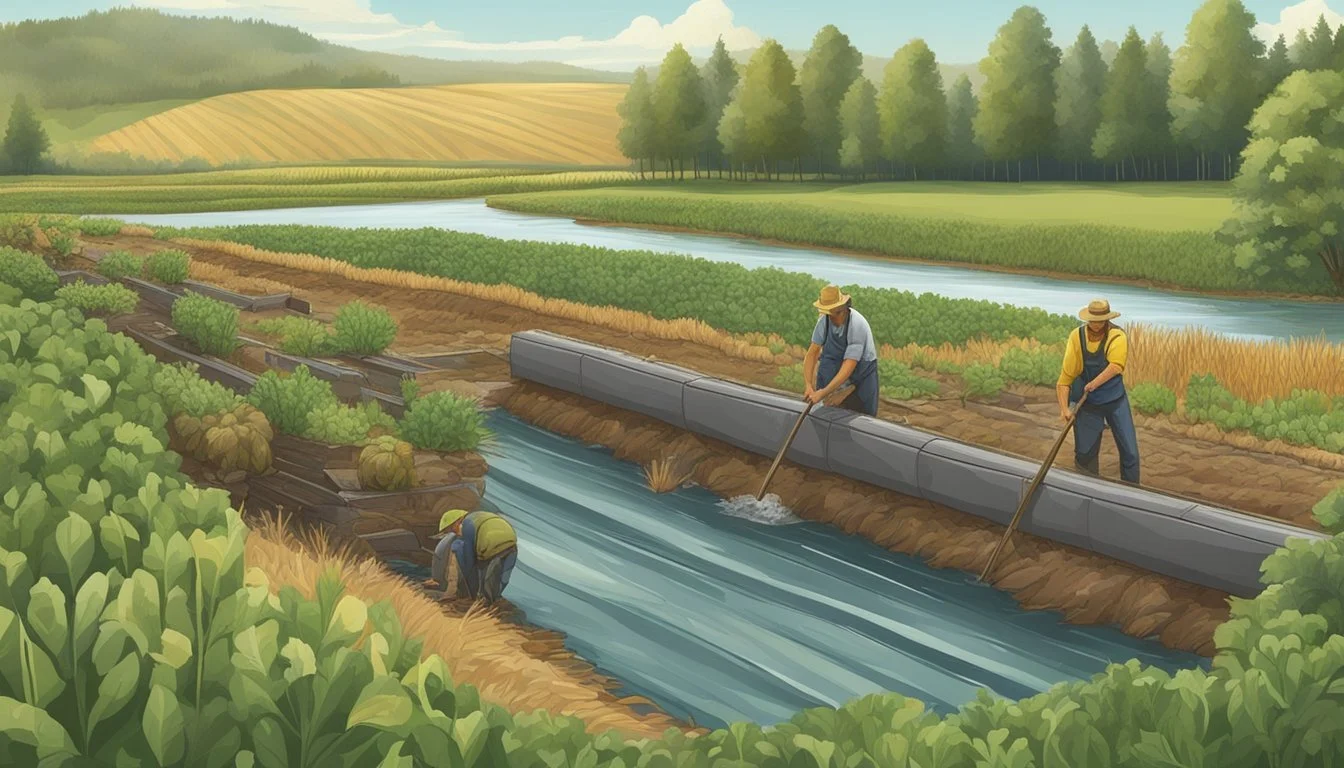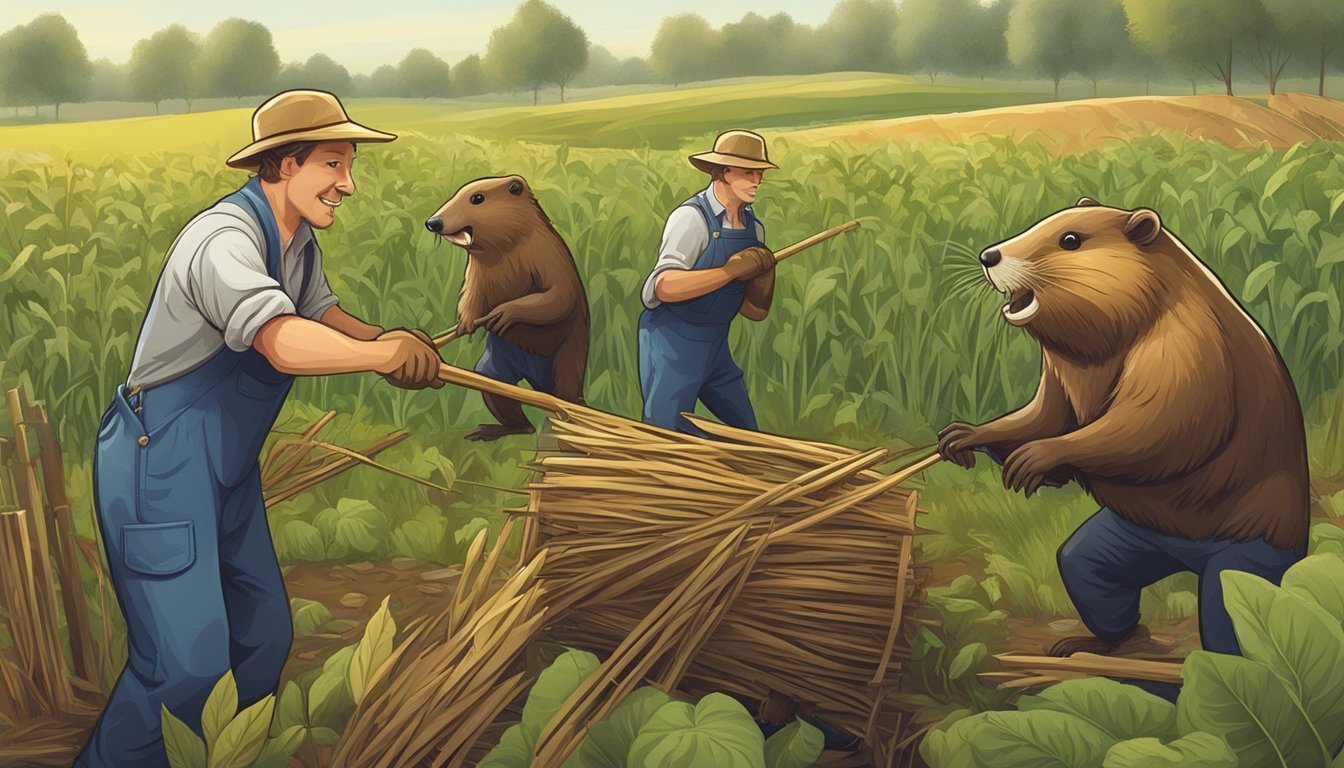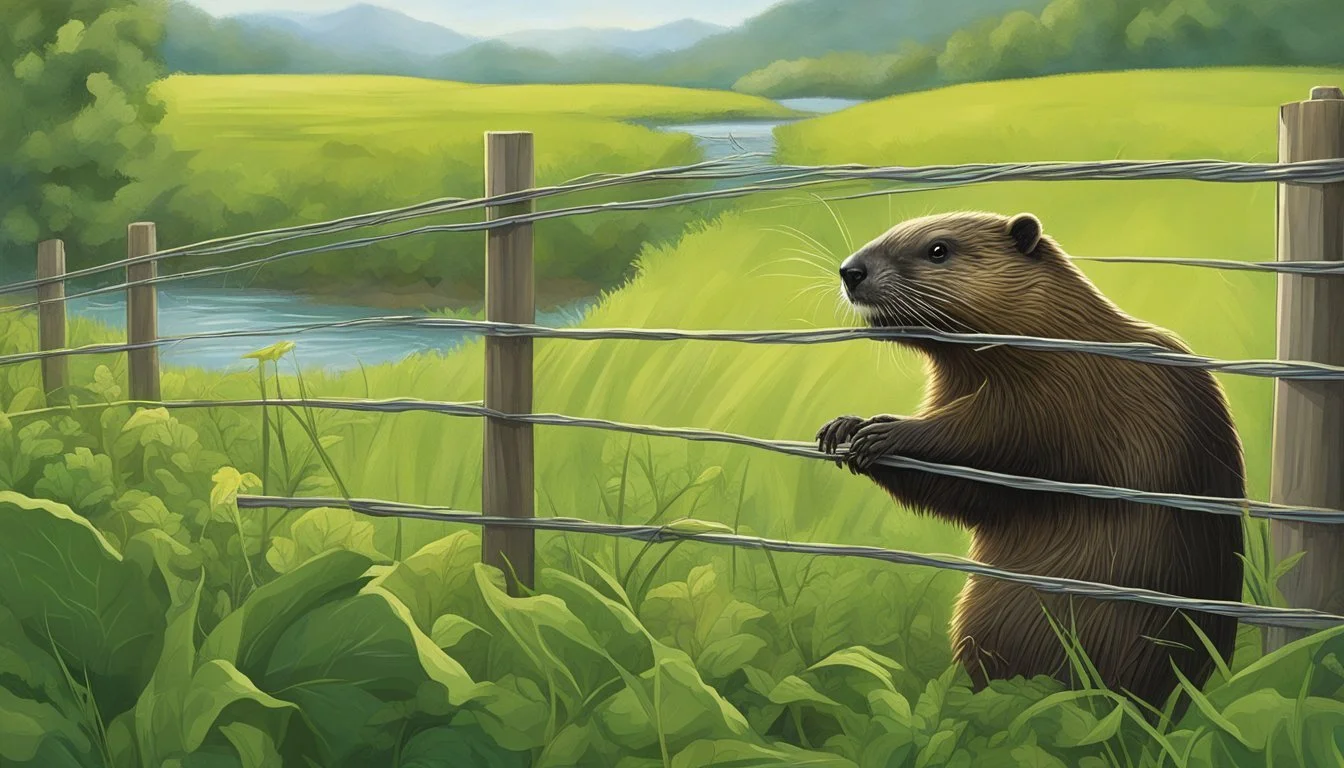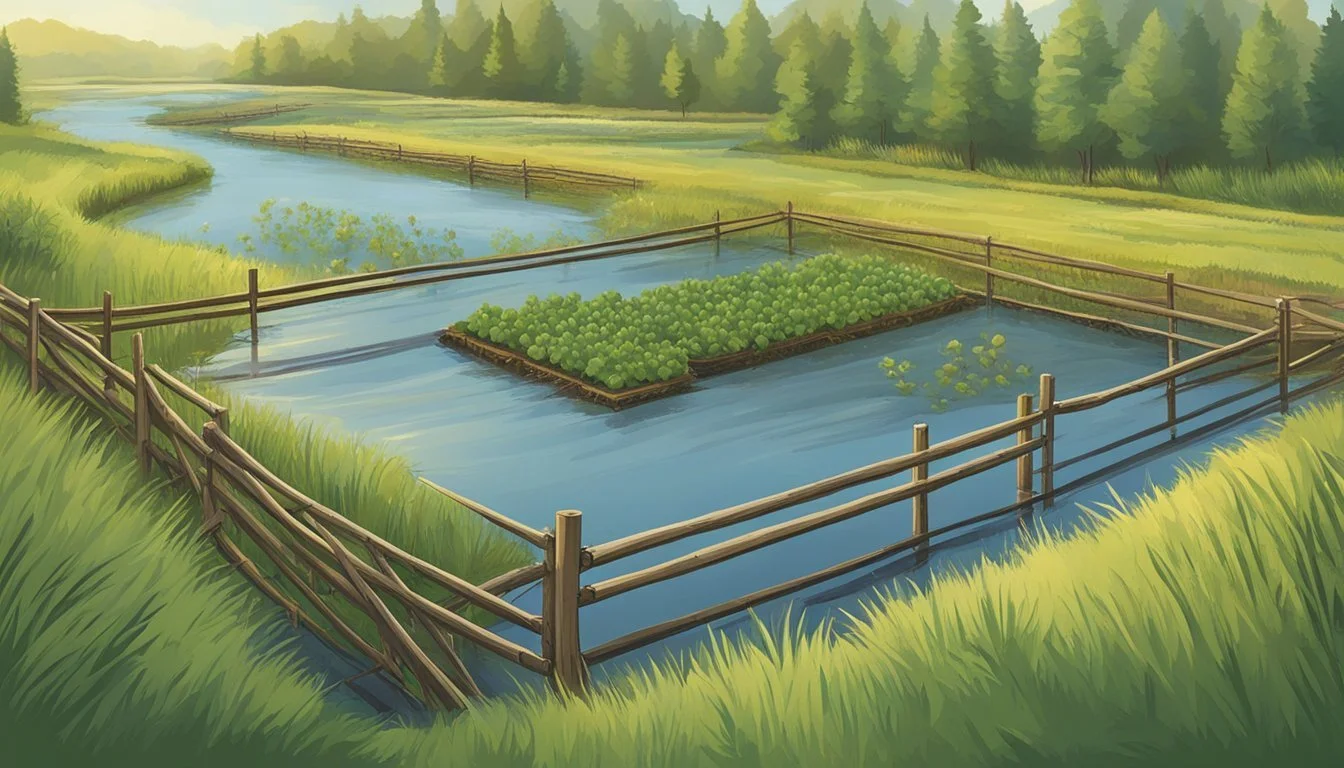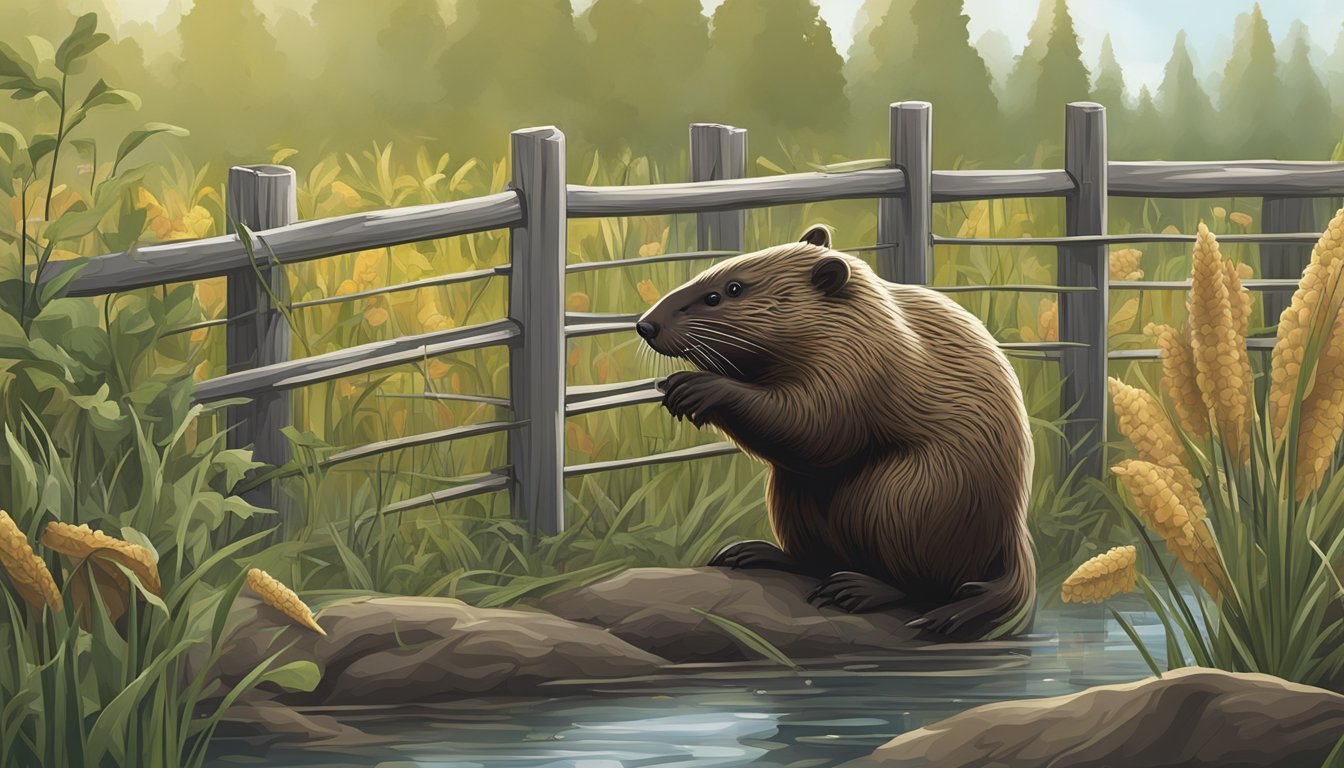Protecting Crops from North American Beaver
Effective Management Strategies
The North American beaver, recognized as the continent's largest rodent, has a significant impact on the environment and ecology due to its natural behaviors. Beavers are skilled engineers, building dams that create wetlands beneficial for numerous species. However, their dam-building can lead to conflicts with human agricultural interests when these wetlands expand into farmlands, resulting in flooded crops and damaged agricultural property.
Understanding beaver behavior is key to mitigating the negative effects they can have on crops. Beavers are mainly nocturnal and are driven to build in response to the sound of running water. Effective management strategies focus on altering their habitat in a way that dissuades them from building near valuable farmland. Employing techniques that prevent beavers from detecting the sounds that trigger their construction activities can protect crops without harming the beavers or the ecosystem services they provide.
Addressing the conflicts between beaver activity and agricultural interests requires a balanced approach that protects the natural behaviors of beavers while securing crops from damage. This necessitates a thorough understanding of beaver ecology and proactive management plans that allow for coexistence. Such strategies are essential for preserving both the environmental benefits beavers offer and the productivity of agricultural lands.
Understanding the North American Beaver
The North American beaver, Castor canadensis, plays a critical role as an ecosystem engineer within its habitat. These semi-aquatic mammals are known for their ability to transform environments through the construction of dams and the creation of wetlands. Their activities often result in significant ecological changes that can increase biodiversity and benefit various species.
Beavers are well-adapted to their aquatic habitats, featuring webbed hind feet and a flat tail used for swimming and balance when carrying materials. Their distinctive orange incisors are both strong and continuously growing, allowing them to efficiently fell trees and shrubs for dam-building and feeding.
Habitat Creation: Through dam building, beavers generate standing water—wetland ecosystems—which serve as habitats for a myriad of plant and animal life.
Keystone Species: As a keystone species, the presence of the beaver is vital for maintaining the health and diversity of the ecosystem. Their dam-building activities help in water purification and soil conservation.
Biodiversity Support: The ponds and wetlands created by beaver dams enhance biodiversity by providing habitat for various species, from fishes to birds, and creating lush plant communities.
While beavers are beneficial for the environment, their natural behaviors can sometimes conflict with human agricultural interests, necessitating strategies to protect crops from beaver-related alterations to the landscape. Understanding beaver ecology and behavior is therefore essential for developing coexistence strategies that safeguard both agricultural resources and these important ecosystem engineers.
Beaver Habitats and Their Expansion
The North American beaver's propensity for habitat construction and alteration through dam-building activities profoundly impacts surrounding ecosystems, urban developments, and agricultural lands.
Dam-Building and Its Effects on Ecosystems
Beavers are well-known for their dam-building capabilities which play a significant role in ecosystem engineering. Their activity can create new wetlands—vital habitats for various species and crucial for water purification—by flooding areas to construct their homes, known as lodges. However, while this can benefit many plants and animals, it can also cause water to inundate valuable croplands and other human-utilized spaces.
Wetlands and Floodplains: Beaver Influence
In North America, beavers shape the landscape, transforming streams and floodplains into rich, biodiverse wetlands. These wetlands are indispensable for wildlife, acting as breeding grounds and providing a source of water and food. Yet, the expansion of beaver habitats into new areas can lead to flooding, which necessitates management to protect human structures and crops from unintended damage.
Beavers in Urban and Agricultural Settings
Human expansion into beaver habitats often results in conflicts, especially in urban and agricultural settings. Beavers may block culverts and waterways, leading to localized flooding which can threaten homes, roadways, and farmland. Coexistence strategies might include installing beaver-resistant barriers or working with Wildlife Services to mitigate impact while preserving the ecological benefits beavers bring to their environments.
Human-Beaver Conflicts in Agriculture
In agricultural landscapes, human-beaver conflicts arise primarily due to the beavers' natural behaviors which conflict with farming activities. These conflicts can lead to significant agricultural damage, including crop loss and altered water availability.
Challenges Faced by Farmers and Ranchers
Farmers and ranchers often encounter issues with beavers that build dams and lodges that can obstruct water flow and irrigation systems. This beaver activity can result in flooded fields, loss of arable land, and damage to crops and infrastructure. The mitigation of these problems often requires continual monitoring and management strategies to protect agricultural resources.
Crops at Risk: Identifying Vulnerabilities
Certain crops are particularly at risk of beaver damage. For instance, corn and soy, which are commonly grown near waterways, can become submerged and destroyed by the flooding caused by beaver dams. Recognizing the vulnerabilities of these crops is the first step in developing effective prevention and mitigation tactics.
Flooding and Drought: The Impact on Farming
Beaver activity can cause localized flooding, which has a direct impact on the health and yield of crops. Conversely, the removal of beaver dams to protect farmland can lead to drought conditions, adversely impacting soil moisture levels. Both extremes pose challenges for maintaining a stable and productive farming environment.
Beaver Population and Conservation
Understanding the North American beaver's population trends and conservation measures is crucial to protecting crops effectively while ensuring the species' survival and ecological function.
Population Dynamics and Historical Changes
The North American beaver once thrived across the continent with estimates of numbers ranging from 100 to 200 million individuals before European colonization. Intense trapping for their pelts in the 17th to 19th century drastically reduced their population. Conservation measures and changes in trapping regulations have since then assisted in partially recovering these populations. Current estimates suggest there are now about 15 million beavers in the United States.
Conservation Efforts and Restoration Programs
Conservation efforts have focused on understanding beavers' role in ecosystems as natural engineers capable of creating and maintaining wetlands—habitats that are essential for various species and also for natural water storage and purification. Restoration programs are now benefiting from the beaver's ability to aid in wetland restoration, especially in areas impacted by climate change. Initiatives often involve repopulating areas where they were extirpated to re-establish their ecological roles.
Wildlife Management and Regulations
Effective wildlife management strategies require a balance between protecting agricultural interests and supporting beaver populations. Several U.S. Forest Service Region 2 administrative units designate the beaver as a Management Indicator Species, using it to gauge the effects of land management practices. Trapping regulations have been put in place to control populations responsibly, ensuring any beaver control measures are done sustainably and legally. These regulations are enforced to help maintain an equilibrium that supports both agricultural needs and beaver populations.
Mitigation Strategies for Beaver-Related Crop Damage
When addressing beaver-related crop damage, it is essential to implement effective management strategies while considering the ecological impact. These strategies range from installing barriers to managing water flow, and even involving beaver relocation efforts.
Fencing and Other Physical Barriers
Physical barriers are a primary line of defense against beaver damage. By installing deterrent fencing around high-value crops, one can prevent beavers from encroaching on farmland. Metal or plastic barriers, such as hardware cloth or drain tile, can protect individual trees and plants. These materials should be staked securely to prevent beavers from dismantling them. Regular maintenance is necessary to ensure the longevity and effectiveness of these barriers.
Water Flow Management Techniques
To mitigate the impact on water levels caused by beaver dams, beaver pond levelers or culvert protection devices can be installed. This method allows beavers to remain in their habitat while preventing flooding that can damage crops. It is a less intrusive management strategy that requires careful planning and ongoing maintenance to be effective.
Restoration and Relocation Endeavors
Restoration and relocation projects may be necessary when other methods fail to protect crops from beavers. These approaches involve the reintroduction of beavers into areas where they can thrive without impacting agricultural lands. Relocation is conducted by wildlife professionals and is coupled with efforts to restore previously damaged ecosystems, ensuring that beaver populations can be maintained without causing further crop destruction.
Environmental Benefits and Conflicted Interests
The North American beaver is a key species with significant environmental benefits, but its activities can sometimes conflict with agricultural interests. Their dam-building can lead to wildlife habitat creation and improved water quality, yet these same actions may disrupt farming operations.
Ecosystem Services Provided by Beavers
Beavers serve as vital ecological engineers within their habitats. By constructing dams, they create wetlands, which are crucial for biodiversity and serve as a habitat for various species, including salmon. These wetlands can act as natural water filters and increase the storage and purification of water, benefiting the entire watershed. In the Pacific Northwest and California, beaver activity has been linked to essential ecosystems services that contribute to overall watershed health.
Balancing Biodiversity and Farming Needs
Conflict arises when beavers impact agricultural lands, triggering a need for effective beaver damage management. Farmers require strategies to protect their crops from beaver-related flooding while still maintaining local biodiversity. Solutions include the installation of beaver deceivers, which are flow devices designed to maintain water levels without removing the beaver dams that are critical for other wildlife.
Climate Change and Beaver Activities
Beaver dams can also play a role in climate regulation by sequestering carbon in newly formed wetlands, potentially mitigating the effects of climate change. However, balancing the beavers' positive impacts against the potentially negative effects on farmland requires careful management. The revitalization and maintenance of wetlands through beaver activities contribute to carbon capture, further emphasizing the importance of these animals in the broader environmental context.
Innovative Approaches to Coexistence
Achieving a balance between agricultural productivity and ecosystem conservation is crucial. This section explores community engagement, strategic practices, and ongoing research to foster a harmonious relationship with beavers.
Community-Based Beaver Management
Communities across North America are recognizing the value of beavers in ecosystem management and are working towards solutions that enable coexistence. An example is the use of flow devices—tools that regulate water levels without removing beavers. By collaborating with beaver management experts, communities can implement these devices to protect crops while maintaining the environmental benefits beavers provide.
Beaver Coexistence Strategies
A key strategy for coexistence is crop protection. Landowners can employ methods such as the installation of protective electric fencing to deter beavers from damaging crops. This is a direct and cost-effective solution that allows beavers to continue contributing to their habitat without impacting agricultural land. Additionally, educational outreach on the beavers' role as ecosystem engineers can enhance local understanding and support. For more on crop protection, check out Beaver Crop Protection — Project Beaver.
Advancing Research and Best Practices
Research into the habits and impacts of beavers continues to inform best practices for coexistence. There is an ongoing examination of beaver behavior and the complex wetlands ecosystems they create, contributing to a foundation of knowledge that supports their role in mitigating wildfires and providing habitat diversity. The sharing of findings within the industry is essential for the development of solutions that respect both agricultural needs and environmental integrity. More about this research can be explored at Reintegrating the North American Beaver.
Case Studies: Success Stories and Lessons Learned
In analyzing beaver restoration's impacts on agriculture, a review of specific instances reveals best practices and valuable lessons. These case studies showcase the delicate balance between maintaining thriving beaver populations and protecting crops.
Beaver Restoration in the American West
Restoring Beavers and Water Resources: In the arid landscapes of the American West, particularly the Cascades, beaver restoration programs have shown promise in combatting drought conditions. Successful introduction of beavers to these areas has contributed to increased groundwater replenishment and reduced wildfire risks. Farmers and ranchers have seen benefits from these efforts, as the beaver-engineered landscapes help to maintain water table levels, crucial for the irrigation of crops.
Key Outcomes:
Improved groundwater levels, essential in arid regions.
Formation of wetlands that aid in wildfire prevention.
Coexistence Strategies: Projects like the Beaver Restoration Program aim to co-manage land for both agricultural use and wildlife habitation. This includes using flow devices to manage beaver dam water levels and prevent flooding of crop lands.
Lessons Learned:
The necessity of adaptive management tools to mitigate potential crop damage.
Importance of community involvement and education for harmonious coexistence.
Agriculture and Beaver Management in Farming Communities
Impact on Farm Lands: Farmers working land adjacent to rivers and streams have historically seen the North American beaver as a pest. However, studies have demonstrated that with careful management, farmers can reap ecological benefits that beavers offer while protecting their crops. Field borders and tree-wrapping are examples of effective deterrent methods that prevent beaver intrusion into crop areas.
Effective Practices:
Exclusion techniques such as fencing to protect valuable trees.
Water control structures to manage water levels and prevent field flooding.
Engaging the Farming Community: By engaging farmers directly in beaver management strategies, there is an increased rate of success. Farmers have contributed local knowledge to beaver habitat designs that ensure crop protection. Ranchers have also observed improved forage quality due to the wetland environments created by beavers.
Key Insights:
Farmer education and participation in beaver management is critical.
Beaver presence can lead to agricultural benefits like enhanced soil moisture and nutrient cycling.
The integration of beaver populations into agricultural regions in the American West illustrates the potential for environmental stewardship and economic vitality to go hand-in-hand. With informed approaches and proactive collaboration, both humans and beavers can thrive in shared habitats.
Frequently Asked Questions
In addressing beaver-related challenges in agricultural settings, it's imperative for farmers to be aware of effective strategies for crop protection, legal and regulatory considerations, and the roles of conservation groups in fostering coexistence between farming and beaver populations.
How can farmers safeguard their crops from beaver damage?
Farmers can protect their crops from beavers by implementing physical barriers, such as fencing, or using water flow devices that prevent beaver damming. It's also beneficial to maintain a buffer zone of non-crop vegetation between water bodies and fields.
What regulations exist regarding the protection of beavers in agricultural areas?
Beavers are often protected by state wildlife regulations, which vary by location. These can stipulate the means by which beavers may be managed and the necessary permits for interventions, as seen in the USDA APHIS Beaver Damage Management information.
What are the most effective humane deterrents for beavers near farmlands?
Humane deterrents include the installation of culvert protectors to prevent dam-building activities and the use of beaver deceivers, devices that trick beavers into thinking that their dam-building is not causing water levels to rise, thus reducing the incentive to build a dam.
What role do conservation organizations play in the coexistence of agriculture and beaver populations?
Conservation organizations typically support the development of management plans that mitigate crop damage while preserving beaver populations. They often provide expertise and resources, like the Beaver Conservation Strategy from the U.S. Fish & Wildlife Service.
How can landowners legally manage beaver-related agricultural issues?
Landowners must comply with local and state laws which may require permits to trap or relocate beavers. They are encouraged to work with wildlife officials to develop a legal and sustainable management plan.
What are the implications of beaver activity on crop production and farm management?
Beaver activity can lead to flooded fields and damaged crops, which necessitates additional farm management strategies. Understanding beaver behavior and adopting proactive measures can mitigate these impacts and reduce the potential for conflict.

